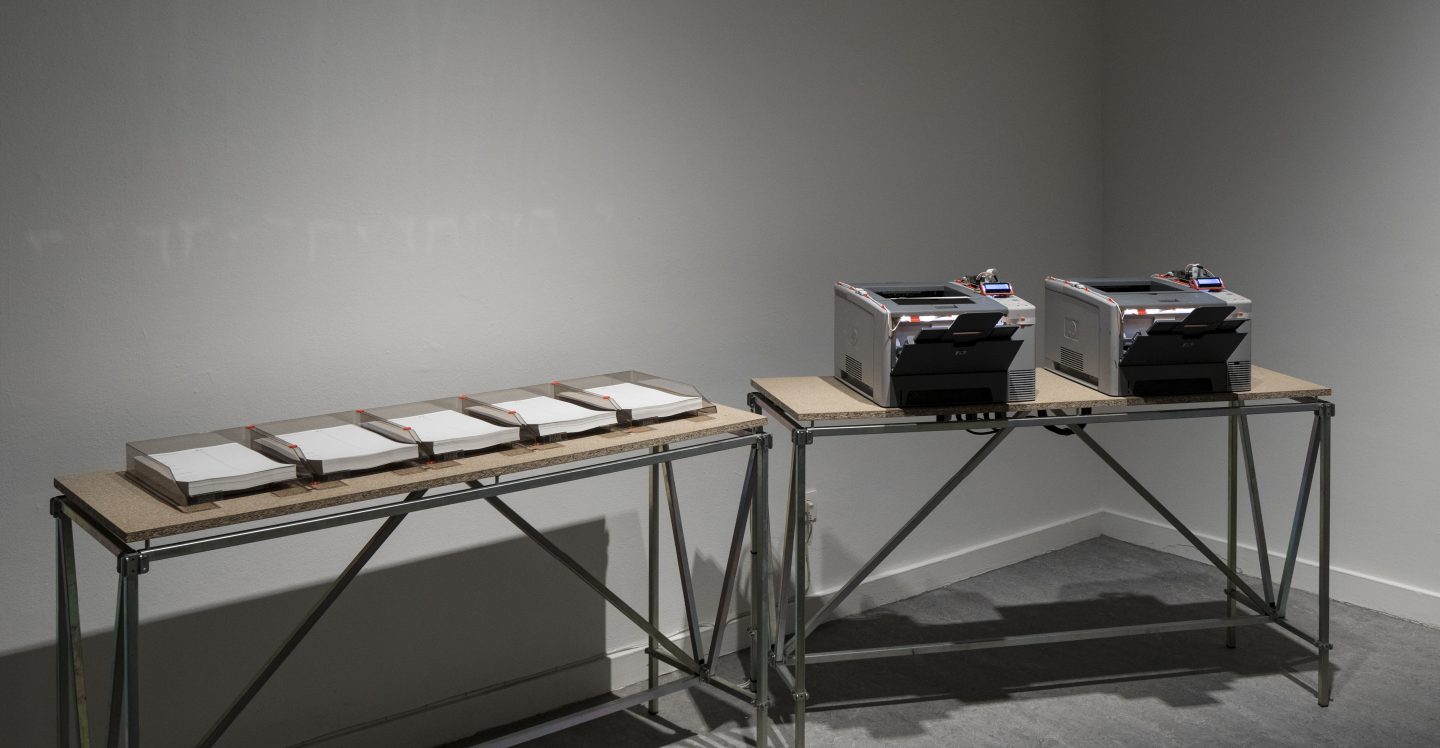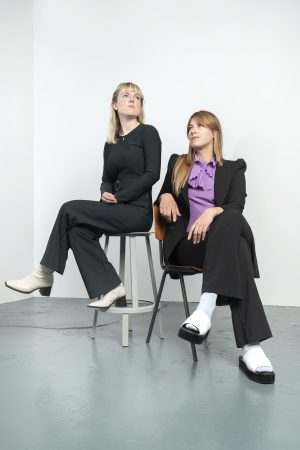

A conversation with Teis De Greve
On knowledge transferral in the digital age.
As a digital designer and developer, Teis De Greve investigates the influence of technological developments on society. He also explores how knowledge is collected and transferred in the digital age.
– Elien Haentjens in conversation with Teis De Greve
“The friction between books and online information fascinates me.”
After earning a degree in Interaction Design at Luca School of Arts in Genk, Teis De Greve was selected for Toegepast 21, a mentored trajectory for young design talent. He spent a year working on his installation How to Make a Book, under the guidance of Z33 coaches. “I researched the meaning of open-source hardware and DIY culture for a traditional and stable medium like print. The installation consisted of a massive self-built printer that photographed existing books and then deleted or added text to create new content. The installation I created for The School of Time in Istanbul and then further developed for The Work of Time, builds on this idea. By hacking standard desktop printers, which are much easier to operate, it became much more interactive,” De Greve explains. “Instead of using books, I used an A4 glossary of terms inspired by the topic of ‘time’.”
De Greve worked closely with curator Ils Huygens on the glossary terms. “Inspired by the work and research of The School of Time and The Work of Time, we created a list of the most relevant terms. The printers use those terms to find related information on Twitter and Instagram, which can then be printed on the glossary page in real-time at the press of a button. Unlike a traditional glossary, these terms have been given no definition, and the extra layer serves as an interpretation. It’s interesting to see how sources like these visualise abstract concepts linked to time,” De Greve concludes.
Static versus dynamic
In his installation A Ditto, Online Device, De Greve investigates the contrast between constantly changing online data and a slow medium like print. “We meticulously researched the terms, which makes this installation much more curated than the first version. The device continuously prints out new information to match the ever-changing stream of online information. Moreover, the information you will find online is closely related to the search context. For example, if you search for a term like ‘unproductive time’ in an academic context, you’ll see questions like: how do we create unproductive time? Do we always have to be productive? How can we justify this within our capitalist society? By contrast, a more commercial context will generate information about reducing productivity loss, or time management for dummies.”
In addition to the glossary terms, the intrinsic effect of the installation is intricately linked to the aspect of time. “The information on Instagram and Twitter constantly changes due to the content posted by users and the underlying social media algorithms, which means the printers will never print the same information twice. In contrast, the contents of a book, once printed, are permanent. Despite its rapid obsolescence, a book maintains a more dominant presence than online information. It’s this friction between the static nature of books and the ever-evolving nature of online information that fascinates me. From this perspective, I use installations to explore how we can use printers and the printing process differently, so they align better with our modern world.”








